

Damion Smy
Boxy new KGM Musso unveiled to take on HiLux and Ranger ahead of Australian launch
8 Hours Ago
The chance to drive a Ferrari Purosangue from Italy to France for the Le Mans 24-Hour race is a once-in-a-lifetime dream drive.
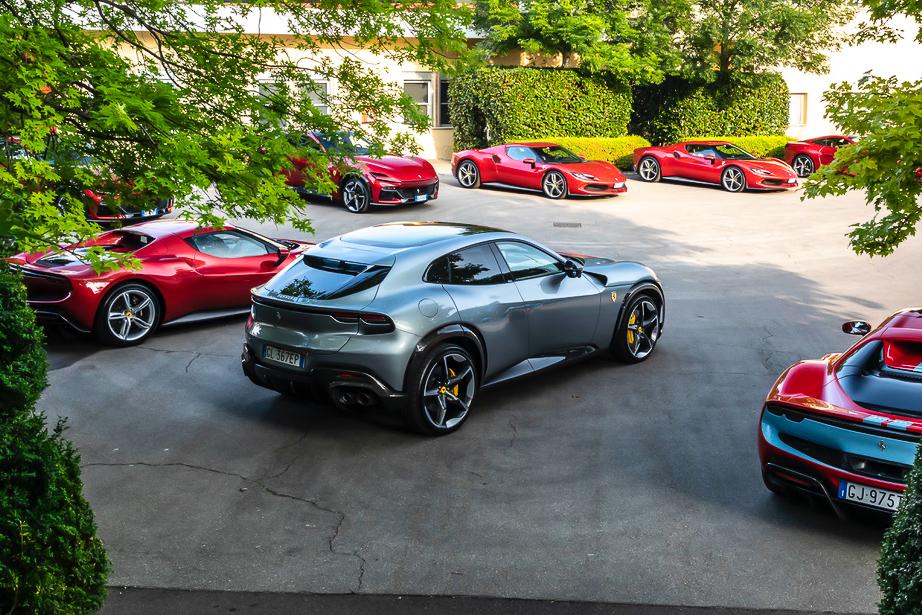
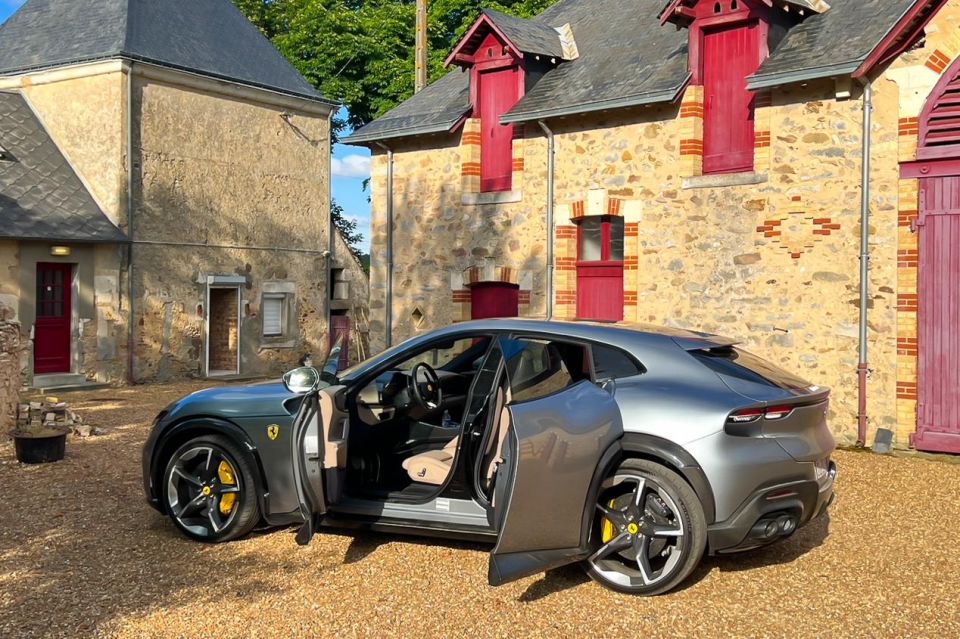

Senior Journalist

Senior Journalist


Senior Journalist

Senior Journalist
Where expert car reviews meet expert car buying – CarExpert gives you trusted advice, personalised service and real savings on your next new car.
The global preview drive of a new car is usually short, hectic, intense – and a long way from home.

A longer and more considered experience, best on roads you know well and back in Australia, is the proper way to provide the correct perspective and verdict.
But what if the car is a Ferrari Purosangue? CarExpert already rates it as the world’s best SUV.
Then, what if Ferrari organised a very special drive – the Ferrari Tour to the Le Mans 24H – to start from its Maranello headquarters in Italy and finish at Le Mans in France to coincide with the start of the 100th anniversary running of the classic 24-Hour sports car endurance race?
Well, it would be rude to say no. Which is how we came to be driving out of the historic front gates at Maranello in a cavalcade of cars covering the full spectrum of the latest Ferrari range, with a combined price-tag topping $20 million.

Three days of driving time with a Purosangue, even with much of the route on boring freeways, is a very, very rare treat. It is, without exaggeration, a dream drive.
Ahead are endless smiles, thousands of camera phone pictures, dozens of thumbs-up salutes, and crowds at every stop. Never has refuelling been so much fun.
Surprisingly, even in a full field of two-seater supercars, it’s our Purosangue that attracts the most attention.

Some people want us to carry their luggage, others crave the quietness, and everyone is looking at the clamshell doors. When the talk turns to ’suicide’ doors, a term tracking back to front-hinged front doors in the 1930s, a Ferrari person politely suggested we use their preferred ‘welcome doors’ tag.
In this line-up – including the 296 GTB and GTS – everything is pricey and special.
“The average price of the cars would be around $1 million,” the Ferrari person told us. That’s right on the button for the Purosangue, which has an official starting price of $728,000 before on-road costs in Australia. But dip into the special stuff – our car has carbon brakes, just for a start – and it’s easy to rattle up a $1 million bottom line, including on-road costs.
More importantly, for people who want to park a Purosangue in their (multi-car) garage, the delivery delay is still more than two years. The first Australian cars should land before the end of 2023 and Ferrari has, at least, re-opened its order books after it was overwhelmed during the frantic stampede when the car was announced.
Even so, Ferrari has stated bluntly that Purosangue production will never be more than 20 per cent of the Ferrari total. It does not intend to be like Lamborghini or Porsche, where their SUVs are the volume sellers, contribute massively to their profits, and ensure the survival of their 911 and Revuelto sports cars.
Buy your new car without the stress. It's fast, simple and completely free.

Great service from Travis and team, second time I have used this business would not hesitate to recommend them to anyone
Craig C.
Purchased a Ford Ranger in Sunshine Coast, QLD
CarExpert helped Craig save thousands on his Ford Ranger, now let us save you on your next new car.
Find a dealThe car does not look remotely like an SUV. Too many curves, for a start. It’s a sporty coupe with high-rider suspension that helps definite it as a ‘crossover’ in 2023.

More coupe-crossovers are coming, as CarExpert has previously reported, and the Purosangue is excellent proof that you can have a practical family car without restoring to a big box.
The boot really can handle luggage for three big blokes, even if we’ve packed light for Le Mans. Nothing has to go into the back seat, apart from laptops for on-the-road writing.
Those twin back seats are luxurious with genuine legroom – even with a couple of 180-centimetre front-seat travellers – and toe space too.
The air-conditioning outlets are plentiful and easy to use, with a pop-up rotary dial similar to the one in the front, with good airflow and proper chilling.
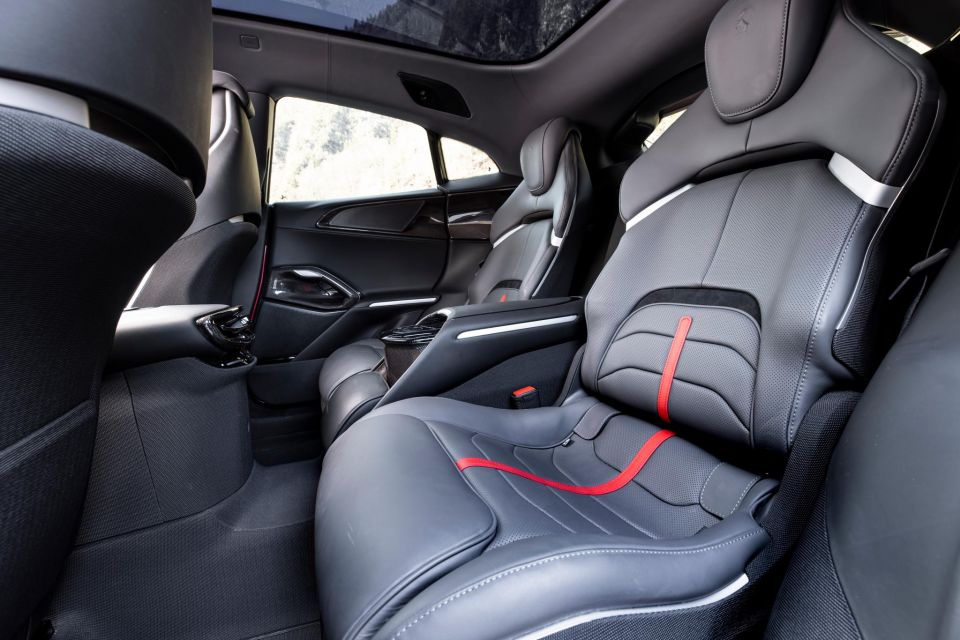
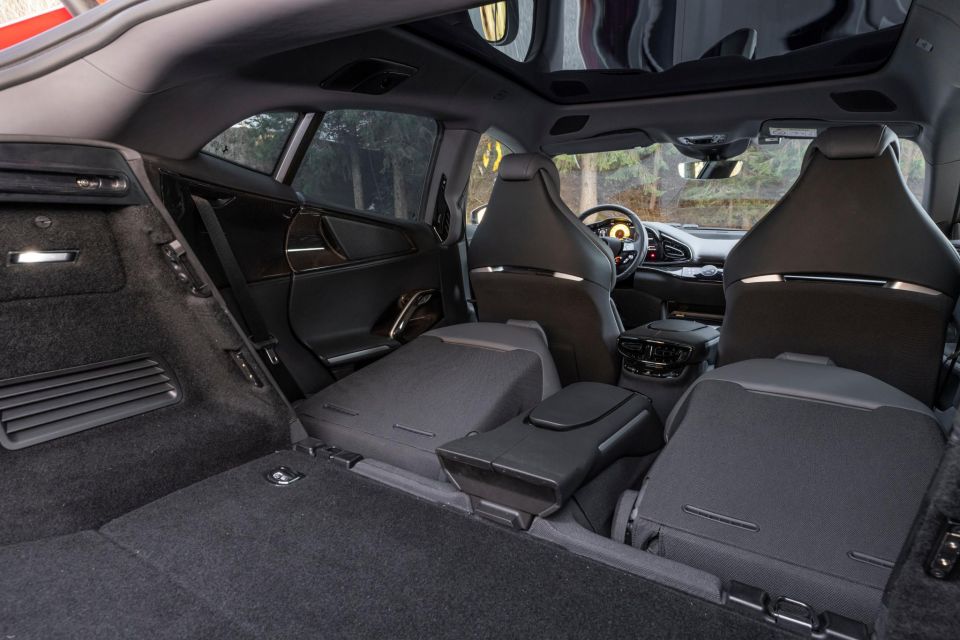
The shape of the rear seats ensures good lateral support when the driver gets going, but they also have electric comfort settings for a semi-reclined travel position. Rear headroom was never a problem.
The Purosangue is obviously targeted only at four-people families, or a couple of couples, but BMW made the same mistake with its original X6. It was quickly supplied with a three-seater rear bench, so maybe there will be some wiggle room in the future.
In the front, everything is obviously Ferrari. We’re just sitting higher. The wireless connection for Apple CarPlay is fiddly at first, and stays that way, but the big digital dashboards – one for the driver and another to entertain the passenger – are clear and simple.
It’s great to have a head-up display to monitor speed with the navigation instructions dead-ahead in the big display, with a traditional yellow Ferrari tachometer just a thumb-swipe away. Which brings us to the steering wheel.
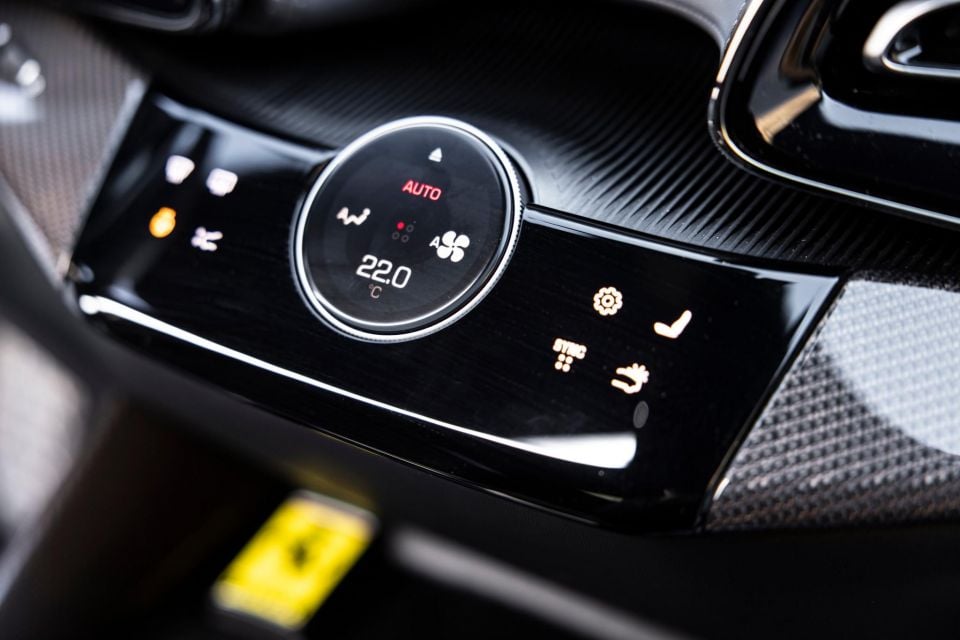

It is crowded – likely overcrowded – with buttons and knobs and takes some learning. The good thing about this drive was that it gave time to learn.The manettino switch is the obvious focus, changing the drive modes from snow safe to all-off excitement.
Pushing it once also moves the air suspension to a nicely compliant ’soft’ setting.The turn-signal switches, since stalks would clash with the big shift paddles behind the wheel, still take time to adapt but a single push is fine for lane-change work.
The Purosangue is almost certain to be the world’s last all-new model with a purely internal-combustion V12 powertrain, as even Lamborghini is going hybrid.
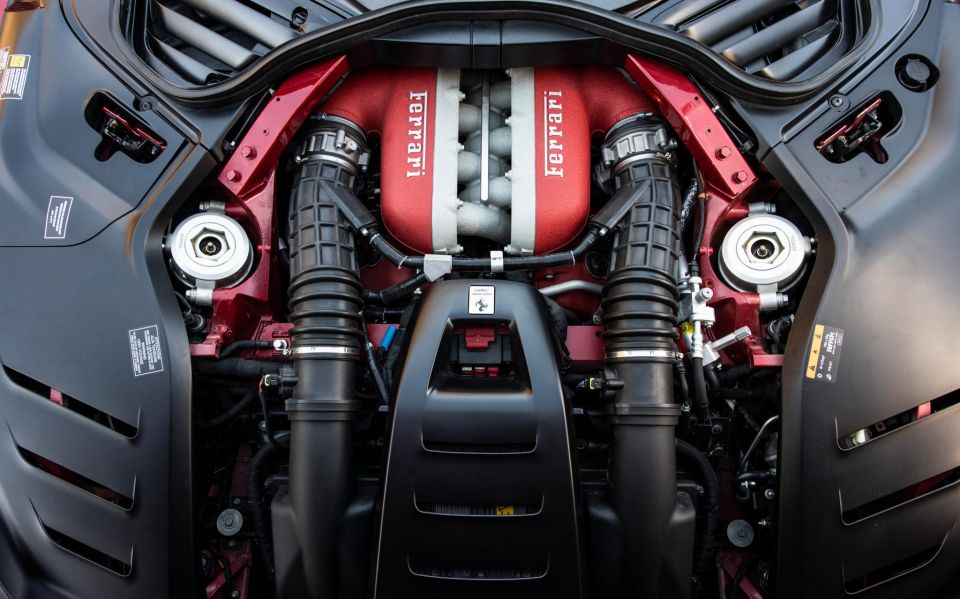
It starts with a gruff ‘whump’ and settles down to a super-smooth idle, although a quick jab on the throttle reveals a free-revving power-plant with little sign of a heavy flywheel.
The official figures are 533kW and 716Nm of torque, with a redline at 8250rpm when the warning lights on the top rim of the steering wheel go all the way from red to blue and then the ’soft’ ignition cut to prevent over-revving.
For quick revision, Ferrari claims a 0-100km/h time of 3.3 seconds and 0-200 in a whacking 10.6s. Top speed? “Around 310,” one of the Ferrari helpers, reminded me.
Because it’s an SUV, but because it is big and heavy (2033kg) and is intended as a daily driver, there is sports focussed all-wheel drive. But don’t go looking for a low-range lever or differential locks.
Instead of making a frantic rush for the nearest corners, the normal approach to an international press preview, there is time to relax into the Purosangue.
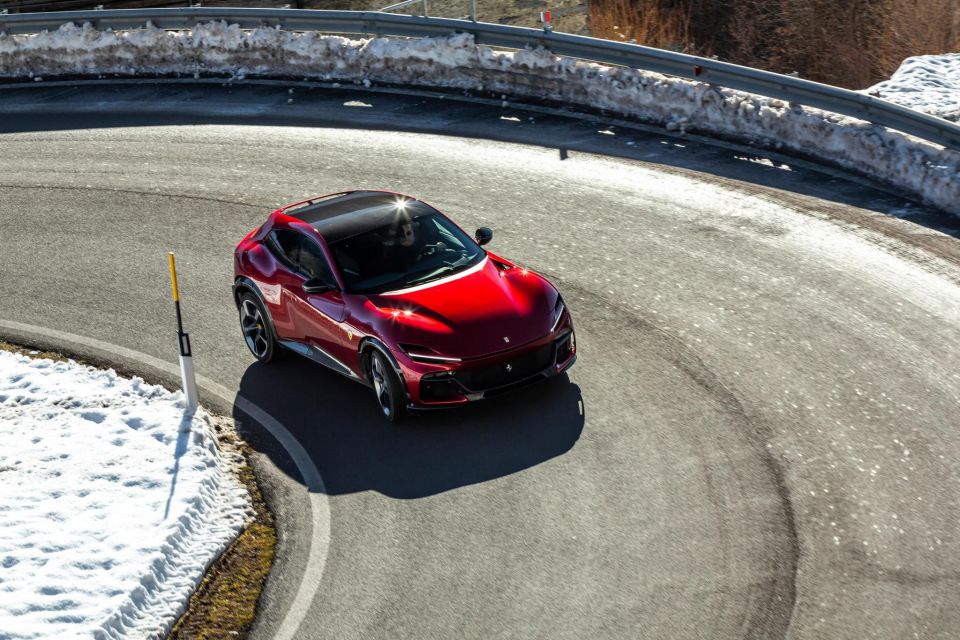
There are two days of driving ahead, for a combined total of 1200 kilometres. It’s not quite the classic Mille Miglia – 1000 miles – road race, but it will do.
The early kilometres pass easily and set the pattern for the drive. So, too, does the excitement of people on the streets and in other cars.
Everyone looks happy to see the Purosangue and then pulls out their smartphone for a video. The family Ferrari is big and heavy, but the overall effect is plush. It wafts up through the gears, slows happily for roundabouts, and has a fantastically punchy sound system.
Then comes the first toll booth and the chance for a serious sprint. Move the manettino up a slot to sport and the exhaust gets gruff and the response provides a giant whack in the back.

It’s only a question of how much you value your license before you get out of the gas.One of our crew, running ahead on a wide-open stretch of freeway, punches easily – and very quickly – beyond 250km/h.
Later, running in a convoy which mixes two Ferraris and a pair of 911 Porsches on the road to Le Mans, is epic fun. It’s camaraderie on four wheels, not an electric car in sight, and people enjoying themselves without upsetting the neighbours.
A Ferrari can sometimes make waves, or excite envy, but the Purosangue – even with its outrageous good looks – gets a much nicer welcome.
Stopping for fuel – did we mention its thirst? – becomes a party at every point. Kids rush up to look, fast car fans pull out their phones, and everyone wants to have a chat and a close look.
An overnight halt after 800 kilometres, at the Clermont-Ferrand headquarters of Michelin, comes at just the right time.
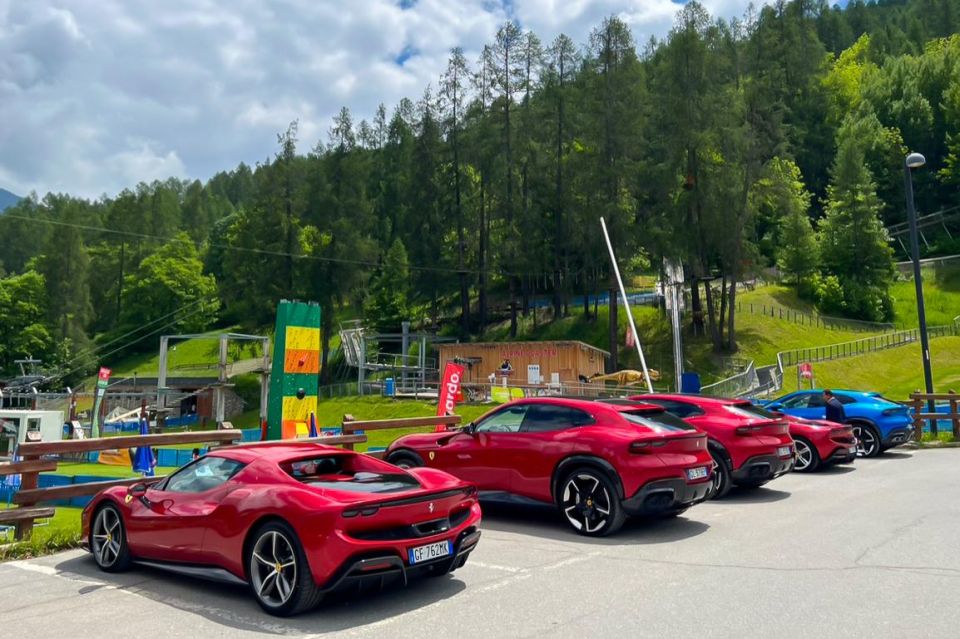
There is no pain anywhere, unlike lesser cars that leave you with a numb bum or creaks in the joints, and that’s a big tick for the Purosangue. Ears, too, are fine and a change from a shouty supercar that can leave you a bit tone deaf for a while.
So the Purosangue has proven, conclusively, that it is a genuine grand tourer for the 21st century and the next development in a Ferrari family tradition of long-distance driving that stretches back to the 1950s.
The final day with the Purosangue, only 400 kilometres this time, is more of the same.
It is quick and composed, shows no sign of the teetering and wallowing that flaws so many luxury family SUVs, and is up for fun whenever there are twists or turns.
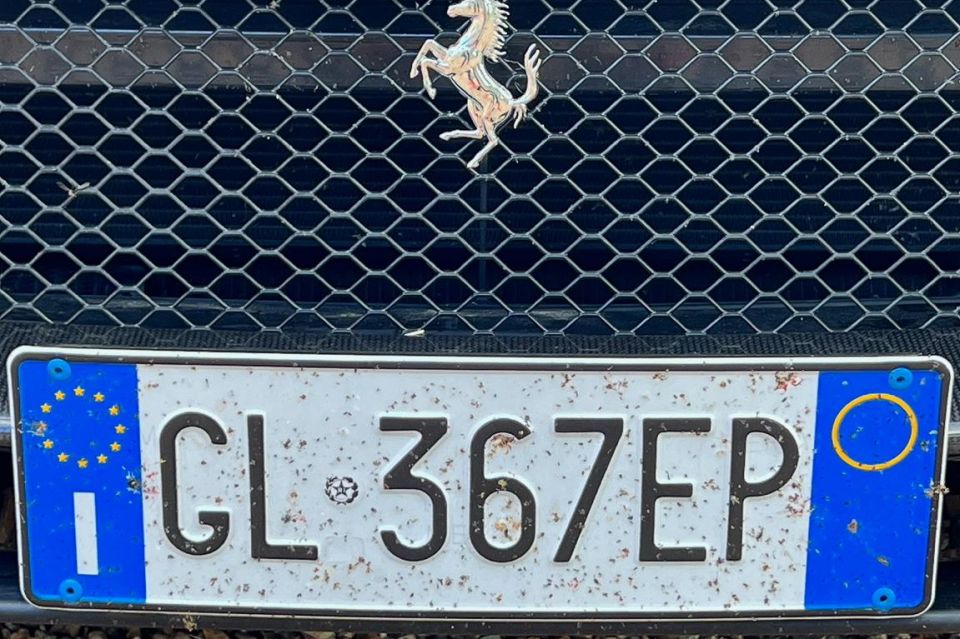
The musical V12 is glorious on any sprint run, and a quick flick of the downshift paddle releases all the goodness you expect from a Ferrari.
Yes, it would have been better to blast over a string of Italian mountain passes, to see what the Purosangue could really do, but what we’re doing is likely to be just as important for people who will buy the car.
If they want a relaxed daily driver, or a GT for weekend getaways, the Purosangue ticks all the boxes with the special Ferrari saucing.
As we were unloading the Purosangue for the very last time, a crowd gathered. As usual, one of the crew – in shorts and a tee but not bothering with shoes – was more focused and had lots of questions.

“How is the luggage space? Was it comfortable for the three of you,” asked our new friend, who we will call ‘Doug’. It seemed he was a genuine shopper, not just another fan, and had already been to his local Ferrari shop in Geneva, Switzerland, to book a test drive.
“How does it compare to the others? The Urus or the Q8,” he asked. The answer, definitely is ‘better’. The Purosangue is a Ferrari through-and-through, but also a grand tourer that works for the 21st century.
It has stunning looks and can be stunningly fast, but is not over-the-top racy or just another boring box for cashed-up families. It’s not as ‘look at me’ as the Urus, definitely not as ‘look away’ as the Rolls-Royce Cullinan, not as bluff as the Bentley Bentayga, and more of a thoroughbred than anything – regardless of the badge – that can trace its SUV roots to the Touareg in the Volkswagen stable.
Then it was our turn.“So, ‘Doug’, what cars do you have?,” I asked, expecting perhaps a recent Ferrari as a weekend toy or the S-Class that signals investment bankers around the world. “I don’t normally do this, but have a look,” he replied – so he swiped on his iPhone and up popped the most extraordinary images of his collection.
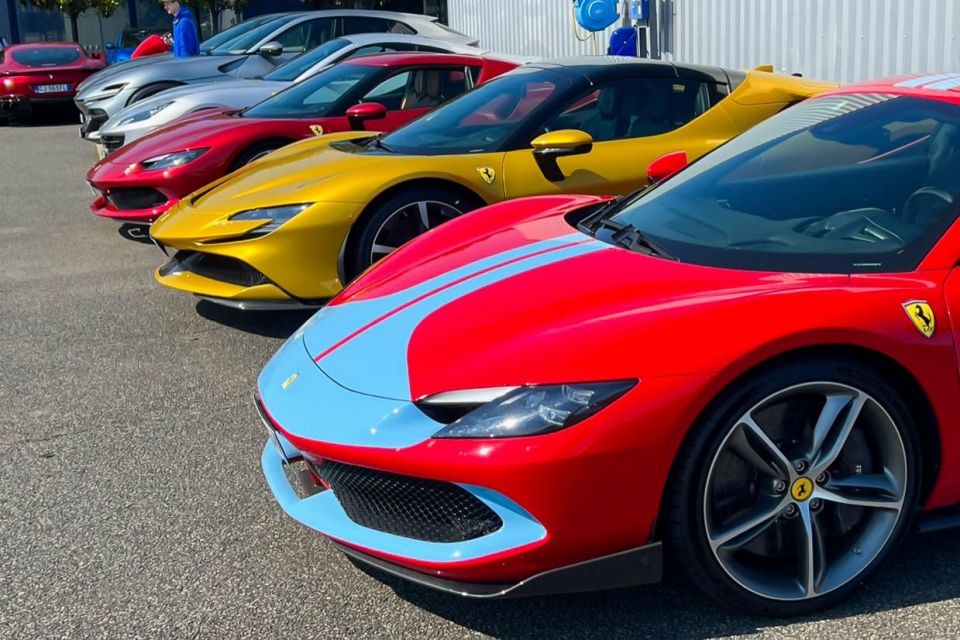

Where expert car reviews meet expert car buying – CarExpert gives you trusted advice, personalised service and real savings on your next new car.
One is a Formula One Ferrari driven by Alberto Ascari to his 1952 world title, and also used by British world champion Mike Hawthorn to score his first F1 victory; and there’s also a Ferrari sports car raced by Juan Manuel Fangio.
Then something even more astounding on this Le Mans weekend. “It’s a 250 LM. It finished on the podium in 1965,” ‘Doug’ told us – that vehicle alone is worth more than $50 million.
This weekend it was on display at the Le Mans museum. “I’ll be driving the LM in the pre-race parade tomorrow,” said ‘Doug’, talking about the cavalcade of Le Mans stars that are the curtain raiser to the 24-Hour.
At a rough guess, ‘Doug’ has a car collection with a nine-figure price tag and he can easily afford to add a Purosangue. That could be why he laughed and enjoyed the idea of being called ‘Doug’. But, finally, he asked the big one.
“So, would you?”, he said, pointing to the Purosangue – we would, not a doubt. Over to you then, ‘Doug’…

Where expert car reviews meet expert car buying – CarExpert gives you trusted advice, personalised service and real savings on your next new car.
Paul Gover is one of the most experienced and respected motoring journalists in Australia. After more than 40 years on the automotive beat there is nothing he has not done, yet he still brings the enthusiasm of a rookie. He has worked in print, digital, radio, television and for every major publisher in the country. He is also a national motor racing champion and once co-drove with Peter Brock at Bathurst.


Damion Smy
8 Hours Ago


Damion Smy
9 Hours Ago


Damion Smy
11 Hours Ago


Damion Smy
12 Hours Ago


Damion Smy
14 Hours Ago


Damion Smy
15 Hours Ago